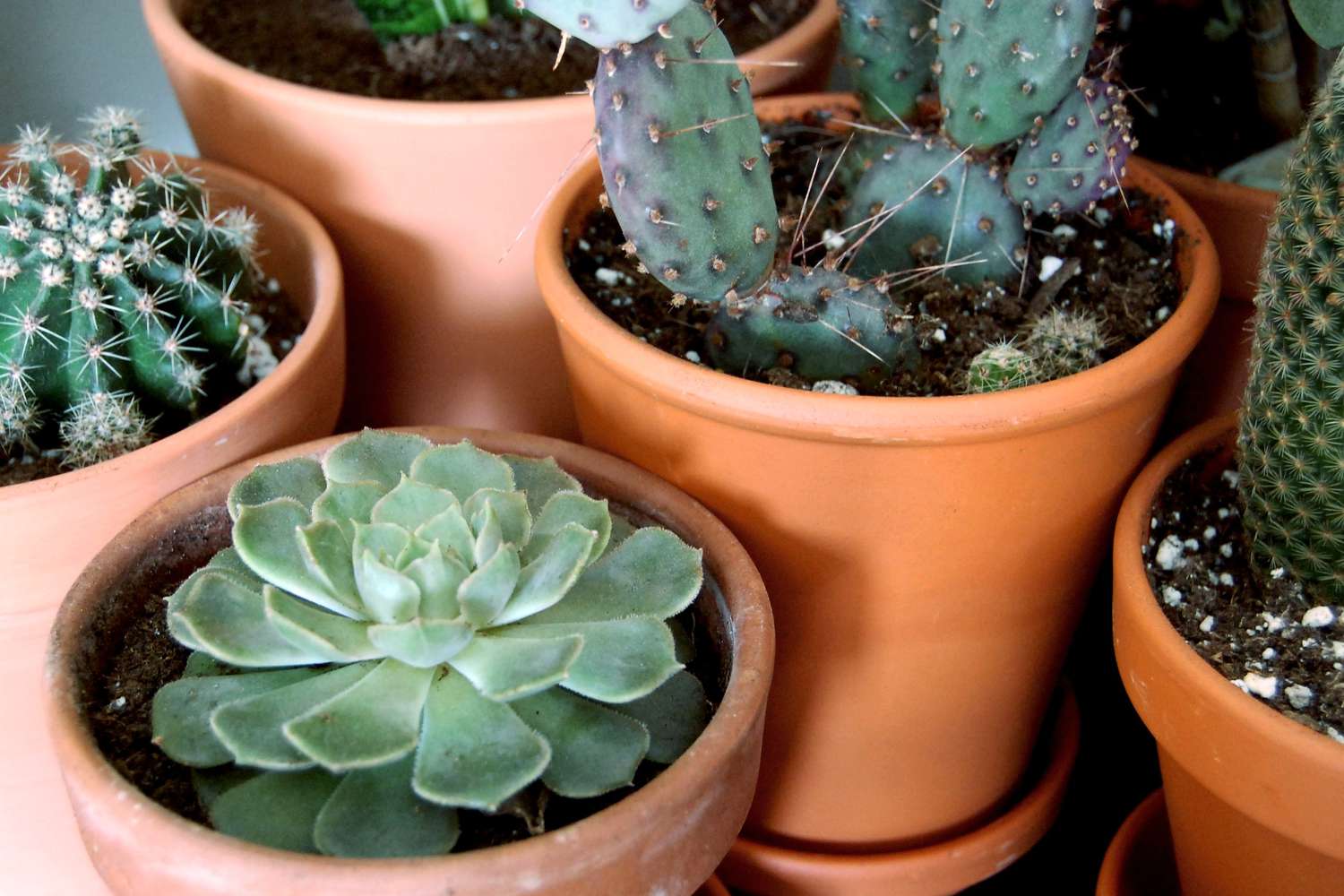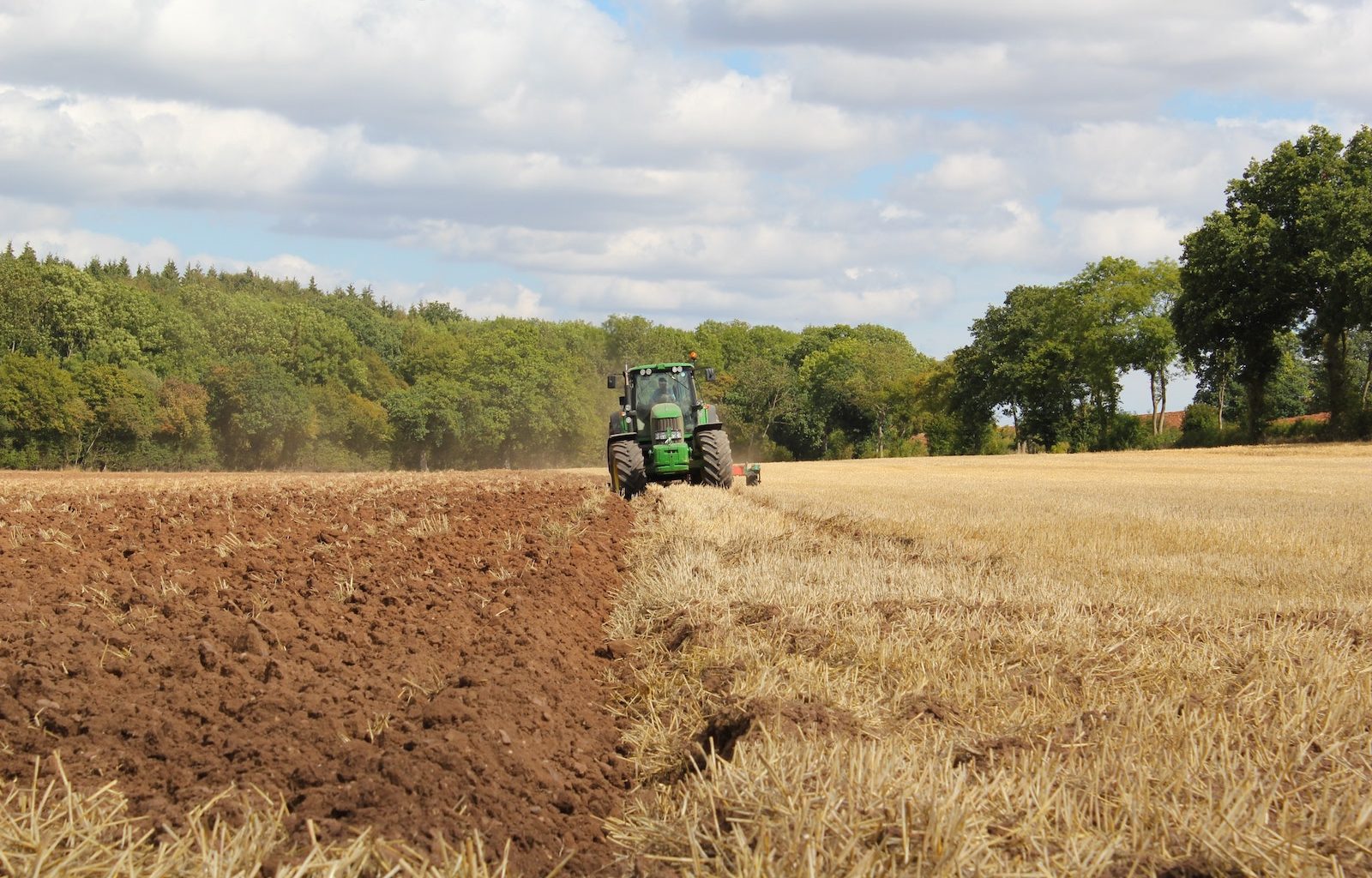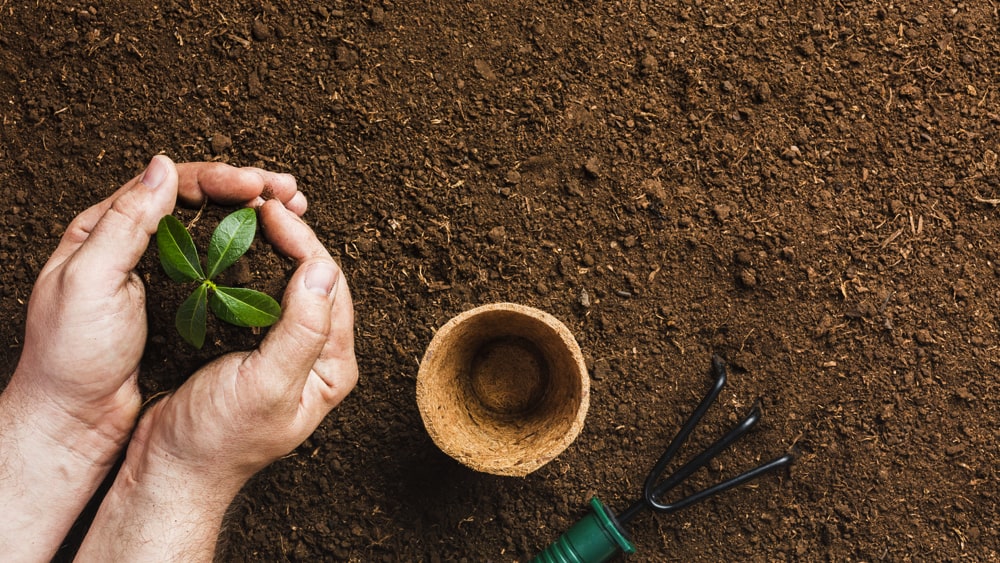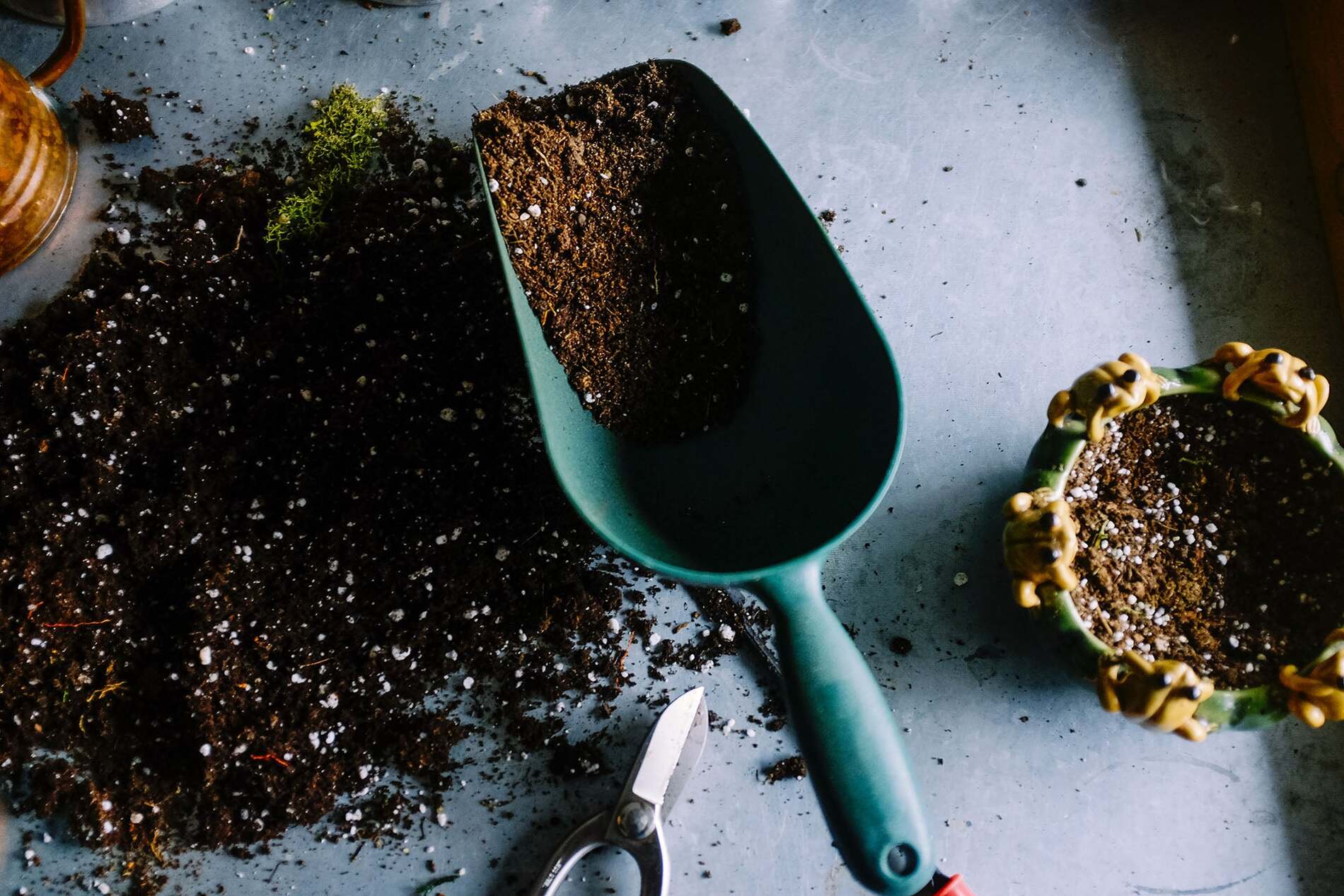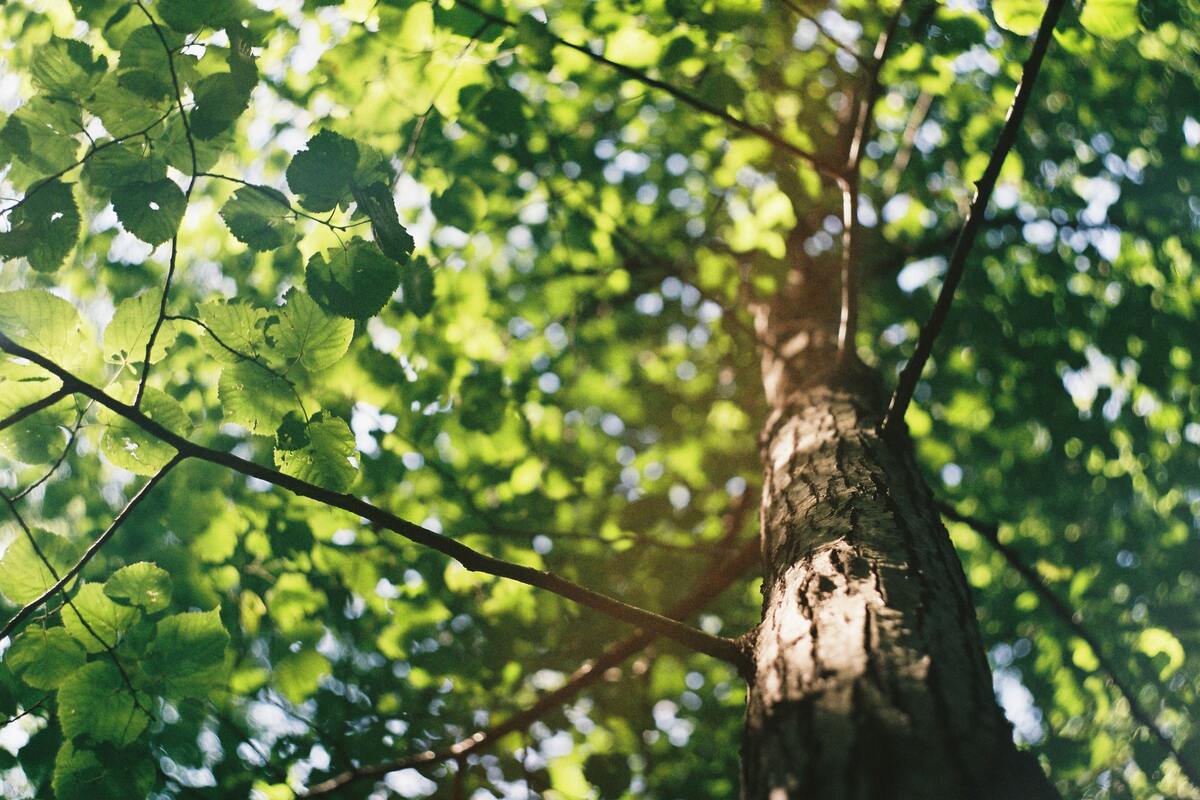Home>Gardening Techniques>Seasonal Gardening>What Is The Difference Between Annuals And Perennials


Seasonal Gardening
What Is The Difference Between Annuals And Perennials
Modified: January 22, 2024
Discover the distinction between annuals and perennials in seasonal gardening. Unlock the secrets to successful cultivation and create a vibrant garden all year round.
(Many of the links in this article redirect to a specific reviewed product. Your purchase of these products through affiliate links helps to generate commission for Chicagolandgardening.com, at no extra cost. Learn more)
Table of Contents
Introduction
When it comes to gardening, understanding the difference between annuals and perennials is essential. These terms refer to the life cycle of plants and have a significant impact on how you plan and maintain your garden. Whether you’re a seasoned gardener or just starting out, knowing the distinction between annuals and perennials will help you make informed decisions about plant selection, care, and overall garden design.
In a nutshell, annuals and perennials differ in their life cycle and growth patterns. Annuals complete their life cycle in one growing season, while perennials can live for multiple years. This simple distinction has a ripple effect on other aspects of gardening, such as maintenance, bloom time, and overall plant performance.
Understanding the characteristics and requirements of annuals and perennials will allow you to create a dynamic and diverse garden throughout the seasons. Annuals provide vibrant bursts of color and are often used to create stunning displays, while perennials offer long-lasting beauty and serve as the backbone of a garden’s structure. Whether you want a garden that changes every year or one that maintains a consistent appearance, incorporating a mix of annuals and perennials is key.
In this article, we will delve deeper into the definitions of annuals and perennials, explore their life cycle differences, growth and blooming patterns, as well as maintenance and care tips. We will also highlight some popular examples of both annuals and perennials, so you can make informed choices for your own seasonal gardening endeavors.
Definition of Annuals
Annuals are plants that complete their life cycle within a single growing season. From seed germination to flowering and seed production, annual plants go through their entire life cycle in a matter of months. Once they have completed this cycle, they typically die off, leaving behind their seeds to ensure future generations.
One key characteristic of annuals is their ability to adapt to a wide range of environmental conditions. They are typically fast-growing, with rapid germination and flowering. This makes them an excellent choice for filling in gaps and adding bursts of color to your garden, particularly during the spring and summer months. Annuals are known for their showy blooms, vibrant foliage, and diverse array of shapes and sizes.
Another advantage of annuals is their ability to provide continuous color and interest throughout the growing season. With proper care, they will bloom consistently, and you can choose from a wide variety of annual plants that flower at different times of the year. Whether you prefer the early spring blooms of pansies and petunias or the bright summer flowers of marigolds and zinnias, annuals offer an ever-changing tapestry of colors to enhance your garden.
Due to their short life cycle, annuals are often used in gardens where variety, temporary displays, or seasonal themes are desired. They are ideal for filling in flower beds, borders, containers, and hanging baskets. Annuals also work well as companion plants, attracting pollinators and beneficial insects to your garden. Additionally, their ability to self-seed means that some annuals may reappear in the following year, creating a natural and spontaneous look in your garden.
Some popular examples of annuals include marigolds, petunias, impatiens, zinnias, sunflowers, and snapdragons. These plants offer a wide range of colors, textures, and growth habits, allowing you to create stunning displays and experiment with different combinations in your garden.
Definition of Perennials
Unlike annuals, perennials are plants that live for more than two years, with some species lasting for decades. They have the remarkable ability to grow, flower, and produce seeds multiple times throughout their lifetime. This makes them a popular choice for gardeners looking for long-lasting, low-maintenance plants that provide year-round beauty.
Perennials have a distinct advantage over annuals when it comes to garden design and sustainability. Once established, they continue to grow and bloom year after year, reducing the need for replanting or frequent changes to your garden layout. This makes them a cost-effective choice for landscaping projects, as their longevity allows you to enjoy their beauty for many seasons.
One of the key characteristics of perennials is their ability to survive winter conditions and go dormant during the colder months. Unlike annuals, which die off completely, perennials have underground structures such as bulbs, tubers, or woody stems that store energy and protect the plant during the dormant period. When spring arrives, perennials emerge from their winter rest and resume their growth cycle.
Perennials offer a wide range of options when it comes to shape, size, color, and texture. From towering delphiniums and elegant iris to delicate astilbes and ground-hugging creeping thyme, there is a perennial plant suitable for every garden style and preference. Additionally, many perennials offer beautiful foliage, even when they are not in bloom, adding interest and texture to your garden throughout the year.
When planning a perennial garden, it’s important to consider the blooming times of different species. By selecting a variety of perennials that bloom at different times, you can ensure continuous color and interest in your garden from early spring to late fall. Some perennials produce a single flush of flowers, while others may have multiple blooming periods or sporadic blossoms throughout the season.
Popular examples of perennials include daylilies, hostas, lavender, coneflowers, black-eyed susans, and sedums. These plants are known for their resilience, adaptability, and ability to thrive in a wide range of climatic conditions. By incorporating perennials into your garden, you can create a sustainable and ever-evolving tapestry of color and texture that will delight you for many years to come.
Life Cycle Differences
The life cycle differences between annuals and perennials are one of the fundamental distinctions that gardeners need to understand. Annuals complete their life cycle in one growing season, typically within a year, while perennials live for multiple years, often returning each spring.
Annuals start their journey as seeds and germinate when the conditions are favorable, such as the right temperature and moisture. Once the seed germinates, the plant will grow foliage, stems, and roots. During this growth period, the plant will also develop buds, which eventually blossom into flowers. After the flower has been pollinated, the plant begins producing seeds, signaling the completion of its life cycle. The plant then dies off, leaving behind the seeds to disperse and potentially grow in the following year.
Perennials, on the other hand, have a more extended life cycle. They also start from seeds but have an additional phase where the plant goes dormant during winter or unfavorable conditions. In the dormant phase, the plant’s growth slows or halts, and it conserves energy by focusing on its root system. When the conditions become suitable again, such as with the arrival of spring, the perennial plant reactivates and regrows from its existing root system, often sprouting new foliage. The cycle of growth, blooming, seed production, and dormancy continues year after year, allowing the perennial to persist and thrive over an extended period.
It’s important to note that not all perennials go dormant during the winter. Some evergreen perennials, such as certain types of ornamental grasses or winter-flowering plants, maintain their foliage throughout the year. Additionally, some perennials may exhibit a variation in their life cycles, blooming profusely one year and having a lighter display the next. This natural variation adds to the charm and intrigue of perennial gardening.
Understanding the life cycle differences between annuals and perennials is crucial for planning and maintaining your garden. Knowing that annuals will need to be replanted each year allows for flexibility in making changes to your garden’s layout and design. Additionally, knowledge of a perennial’s dormancy period informs gardeners on how to care for and prepare the plant for the upcoming seasons.
By incorporating a mix of annuals and perennials into your garden, you can create a dynamic landscape that showcases the ephemeral beauty of annuals alongside the enduring charm of perennials. Whether you prefer the constantly changing vista of annuals or the steadfast presence of perennials, both plant types have their place in creating a vibrant and thriving garden.
Growth and Blooming Patterns
The growth and blooming patterns of annuals and perennials play a significant role in their overall aesthetic appeal and how they contribute to the overall garden design. Understanding these patterns will help you make informed decisions regarding plant placement, timing, and the overall visual impact of your garden.
Annuals are known for their rapid growth and profuse blooming. These plants are specifically designed to complete their life cycle in a short period, which means they grow quickly and bloom abundantly. Annuals often have a compact and bushy growth habit, with sturdy stems that support their showy flowers. They typically produce a large number of flowers over an extended period, ensuring a vibrant and eye-catching display throughout the growing season.
Perennials, on the other hand, have a more long-term and sustained growth pattern. They often start off as small plants, gradually increasing in size and form over the years. Perennials may take a year or two to establish and reach their full potential, but once they do, they can provide steady and consistent growth. While perennials may not have the same explosive blooming as annuals, they often have a more extended flowering period, with some species producing flowers for several weeks or even months.
Another aspect to consider is the timing of the blooms. Annuals can be easily manipulated to bloom during specific seasons by controlling their planting time or selecting varieties that thrive in cooler or warmer weather. This flexibility allows you to create stunning displays for specific events or seasons in your garden. Perennials, on the other hand, have specific blooming periods that are determined by their genetics and local climate. By carefully selecting a variety of perennials with different bloom times, you can ensure a continuous display of color throughout the growing season.
The growth and blooming patterns of both annuals and perennials offer unique opportunities for garden design. The rapid growth and abundance of annuals make them perfect for filling in gaps, adding pops of color to flower beds, or creating impactful container gardens. On the other hand, the steady growth and long-term presence of perennials provide structure and stability to the garden, serving as a foundation for other plantings.
By strategically combining annuals and perennials, you can create a harmonious blend of seasonal bursts of color and enduring beauty. Consider planting annuals in areas where you desire a temporary splash of color or a focal point, while incorporating perennial plants as anchor points to provide year-round interest and structure to the garden.
Understanding the growth and blooming patterns of annuals and perennials will allow you to take full advantage of their unique characteristics and incorporate them effectively into your garden. By carefully planning the placement and timing of these plants, you can create a visually stunning garden that evolves throughout the seasons and keeps you engaged and delighted year after year.
Maintenance and Care
When it comes to maintenance and care, there are some differences between annuals and perennials that you need to keep in mind. Understanding these variations will help you provide the appropriate care for each type of plant in your garden, ensuring their health and longevity.
Annuals often require more attention and maintenance compared to perennials. Because they have a short life cycle, they rely on fast and vigorous growth to produce an abundance of flowers. To support this growth, annuals typically benefit from regular fertilization throughout the growing season. Applying a balanced, water-soluble fertilizer at the recommended intervals will provide the necessary nutrients for healthy foliage and continuous blooms.
Annuals also have higher water requirements due to their fast growth and shorter root systems. They may need more frequent watering, especially during hot and dry periods. However, it’s important to avoid waterlogged soil, which can lead to root rot and other issues. Regular monitoring of soil moisture levels and adjusting watering accordingly will help keep annuals healthy and thriving.
Deadheading spent flowers is another essential task for annuals. Removing wilted or faded blooms not only improves the appearance of the plants but also encourages new flower production. By regularly snipping off the spent flowers, you can stimulate the formation of new buds and prolong the blooming period of your annuals.
In contrast, perennials generally require less maintenance. Once they are established and have developed a strong root system, perennials are often more resilient and require minimal fertilization. A slow-release or organic fertilizer applied in early spring is usually sufficient to provide the necessary nutrients for the entire growing season.
Watering requirements for perennials vary depending on the specific species and their moisture needs. It’s important to research and understand the water requirements of each perennial plant in your garden. Some perennials prefer consistently moist soil, while others prefer drier conditions. Mulching around the base of perennials can help retain soil moisture and regulate temperature.
Another aspect of maintenance for perennials is cutting back or dividing them as needed. Some perennials benefit from rejuvenation pruning, where the plant is cut back to stimulate new growth and maintain a compact shape. Dividing certain perennials every few years helps prevent overcrowding and promotes healthier growth. Additionally, removing any diseased or dead foliage and inspecting for pest infestations are essential tasks for maintaining the overall health of your perennials.
Both annuals and perennials benefit from regular weeding to eliminate competition for nutrients and water. Keeping the garden beds tidy and free of weeds will promote the health and vigor of your plants.
By understanding the maintenance and care requirements of annuals and perennials, you can create a well-maintained and flourishing garden. With proper attention to fertilization, watering, deadheading, and pruning, you can enjoy a beautiful and healthy display of flowers throughout the seasons.
Popular Annual Plants
Annual plants offer a wide range of vibrant colors, interesting foliage, and stunning blooms. Their ability to complete their life cycle in a single growing season makes them a popular choice for adding instant color and impact to gardens. Here are some popular annual plants that are beloved by gardeners:
- Marigolds: Marigolds are a classic annual with bright, cheerful flowers in shades of yellow, orange, and red. They are easy to grow and are known for their pest-repellent properties, making them a great choice for companion planting.
- Petunias: Petunias are versatile and come in a wide array of colors, sizes, and patterns. They are known for their trumpet-shaped flowers and their ability to trail or cascade, making them excellent choices for hanging baskets and containers.
- Impatiens: Impatiens are shade-loving annuals that provide a burst of color in areas with limited sunlight. They come in various shades of pink, white, and purple and are prized for their ability to bloom continuously throughout the summer.
- Zinnias: Zinnias are vibrant, heat-tolerant annuals that come in a variety of colors and forms. They are prized for their long-lasting blooms, attracting butterflies and other pollinators to the garden.
- Geraniums: Geraniums are classic annuals known for their bold, showy blooms and rich green foliage. They are drought-tolerant and thrive in sunny locations, making them a popular choice for containers and borders.
In addition to these favorites, there is a vast selection of annual plants to choose from, each with its own unique characteristics and beauty. Other popular annuals include sunflowers, salvia, cosmos, snapdragons, and lobelia.
When planning your annual garden, consider factors such as color scheme, height, and bloom time to create a visually appealing and harmonious display. By incorporating a variety of annual plants, you can ensure a continuous and evolving burst of color throughout the growing season.
Popular Perennial Plants
Perennial plants are beloved for their ability to come back year after year, providing enduring beauty and structure to gardens. With a wide range of options available, here are some popular perennial plants that are cherished by gardeners:
- Daylilies: Daylilies are versatile perennials that come in a variety of colors and forms. They offer a long blooming period and are known for their ability to tolerate a range of growing conditions, making them a popular choice for many gardeners.
- Hostas: Hostas are shade-loving perennials that are prized for their striking foliage. They come in a multitude of sizes, colors, and textures, adding interest and beauty to shady areas of the garden.
- Lavender: Lavender is a fragrant perennial that offers beautiful purple flowers and silvery-gray foliage. It is not only visually appealing but also attracts pollinators and has aromatherapeutic qualities.
- Coneflowers: Coneflowers, or echinaceas, are drought-tolerant perennials that produce vibrant and long-lasting flowers. They come in a variety of shades, including white, pink, and purple, and are known for their ability to attract butterflies and bees.
- Black-eyed Susans: Black-eyed Susans are native perennials that feature golden-yellow daisy-like flowers with dark centers. They are easy to grow, attract butterflies, and add a cheerful touch to garden borders and meadows.
These are just a few examples of popular perennial plants, but there is a vast selection to choose from when planning your perennial garden. Other beloved perennials include peonies, asters, irises, and shasta daisies.
When selecting perennial plants, consider factors such as bloom time, height, and growing conditions to ensure a visually appealing and well-rounded garden. By incorporating a variety of perennial plants with different bloom times, you can enjoy a continuous display of color and interest throughout the seasons.
Perennials not only offer beauty and endurance but also provide a habitat for beneficial insects and wildlife. They establish themselves over time, making them an investment in the long-term health and diversity of your garden.
Conclusion
Understanding the difference between annuals and perennials is crucial for successful seasonal gardening. Annuals, with their vibrant blooms and fast growth, offer an opportunity to create ever-changing displays of color and beauty. They fill our gardens with instant gratification and can be easily manipulated to achieve specific effects. On the other hand, perennials provide a sense of longevity and permanence, returning year after year to grace our landscapes with their enduring charm.
Both annuals and perennials have their unique advantages and considerations. Annuals allow for versatility and experimentation, providing opportunities to try new combinations and designs. They can quickly fill gaps in the garden or add instant impact to containers and borders. In contrast, perennials offer a sense of stability and structure, becoming the backbone of a garden. They provide a foundation for other plants to thrive and offer a consistent source of beauty throughout the years.
By incorporating a mix of annuals and perennials, you can enjoy the best of both worlds. You can create a dynamic garden that evolves throughout the seasons, with bursts of color from annuals complemented by the enduring presence of perennials. Whether you prefer the constantly changing nature of annuals or the consistent beauty of perennials, a well-planned and maintained garden can bring joy and satisfaction for years to come.
So, as you embark on your seasonal gardening journey, take the time to learn about the life cycle differences, growth patterns, and care requirements of both annuals and perennials. Consider their unique characteristics and how they can contribute to the overall aesthetics and functionality of your garden. Embrace the opportunity to experiment, get creative, and enjoy the ever-changing nature of gardening with annuals. Appreciate the timeless beauty and reliability of perennials, knowing that they will grace your garden year after year.
Remember, the magic of gardening lies in the joy it brings and the connection it fosters with the natural world. So go out, get your hands in the soil, and let the beauty of seasonal gardening unfold before your eyes.


